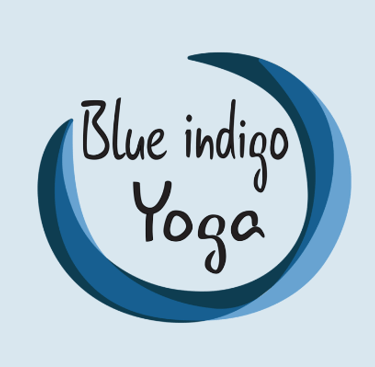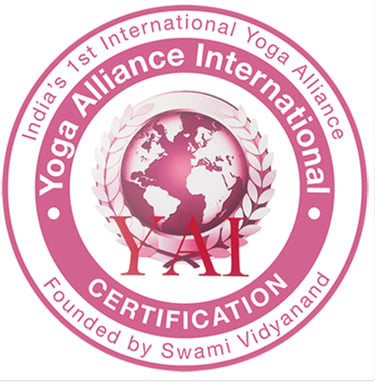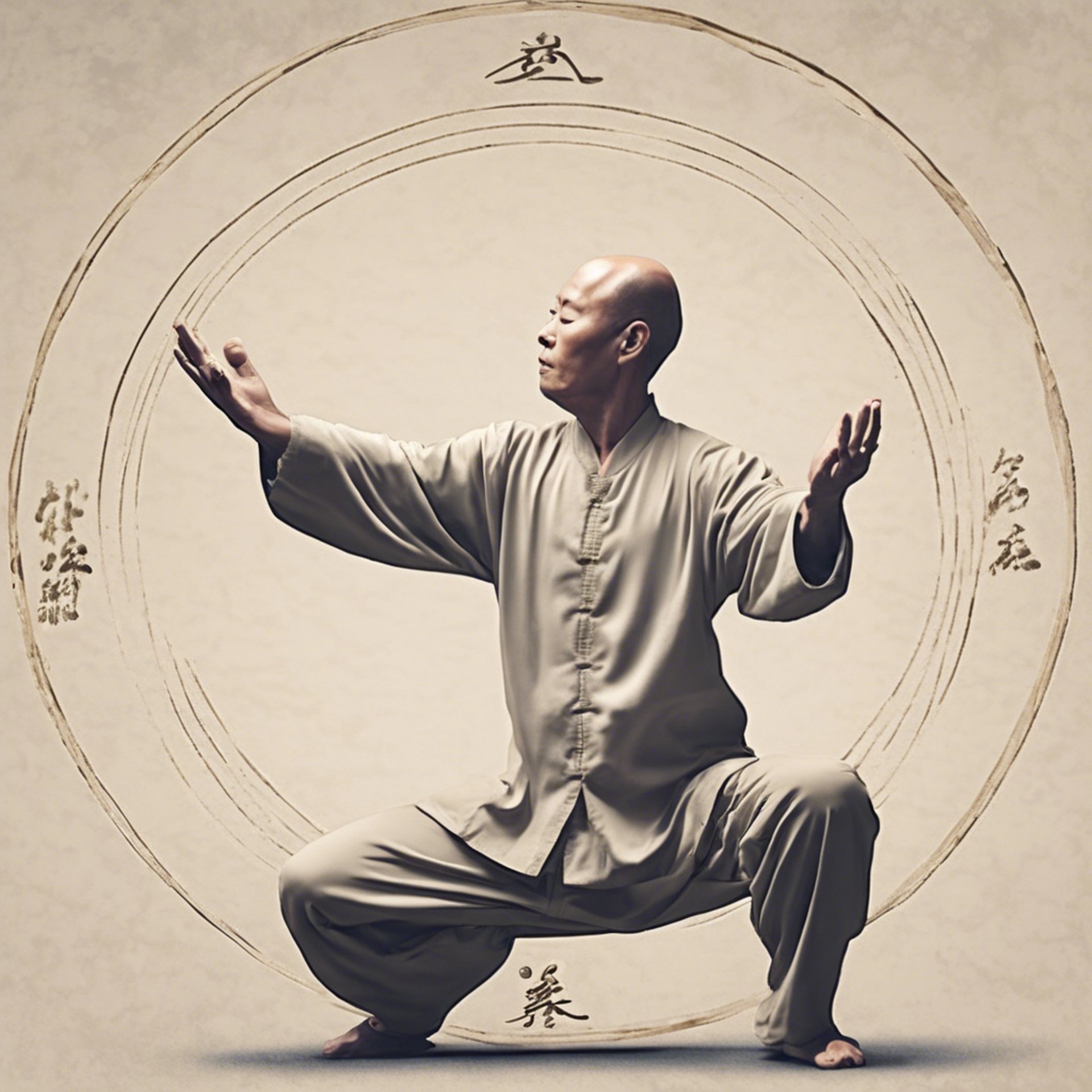
Qi gong the art of life
combine movement, meditation, and controlled breathing to cultivate and balance the body's vital energy
Finding balance in every aspect of your life
Meaning
Qi Gong was developed in China thousands of years ago as a component of traditional Chinese medicine. It is based on the Chinese philosophy of Qi, the vital energy present throughout the universe.


The term “Qi Gong” is composed of two Chinese words: “Qi” which means “energy” or “vital breath”, and “Gong” which means “work” or “cultivation.” Thus, Qi Gong can be translated as “energy work” or “energy cultivation.”
Practice
Qi Gong involves the use of physical exercises, slow movements, specific postures, breathing techniques and meditation to cultivate and regulate Qi in the body. It aims to balance vital energy, strengthen the body and mind, and promote health and well-being.
Benefits
Qi Gong is considered a holistic practice that can have many health benefits. It can improve blood circulation, strengthen the immune system, reduce stress and anxiety, increase flexibility and balance, and promote relaxation and mental clarity.
Philosophy
Qi Gong is deeply rooted in Chinese philosophy, particularly in the concepts of Yin and Yang, the circulation of Qi in the body’s meridians, and the harmony between man and nature. It is often practiced outdoors to connect with the energy of nature.
Practice is available weekly for all guests, students, and volunteers. Feel free to reach out to Blue Indigo Yoga if you are interested in a more in depth Qi Gong practice with us.
Every Sunday at 6pm
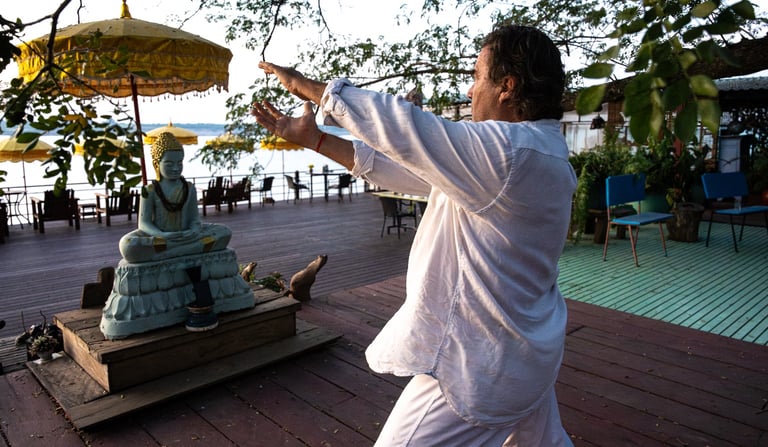

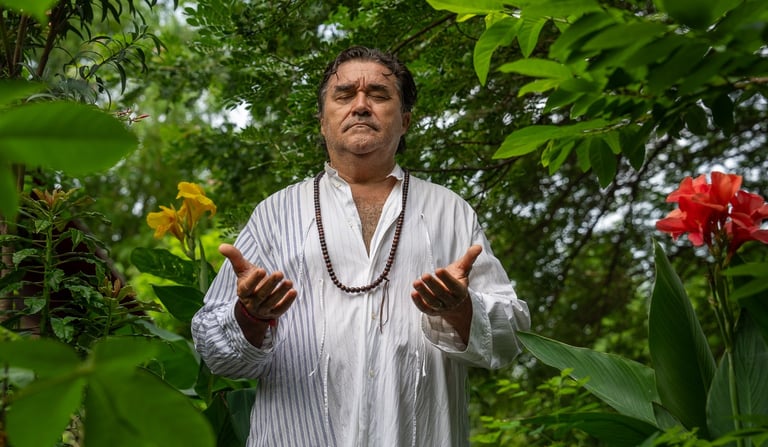

Strengthen the Harmony of Body & Spirit
Postures of different poses are developed and held for several minutes each
Learn about the connection between breath, posture, vibration, and resonance
Below you can find more information on the theories of Qi Gong
Posture of Wu Ji
The 12 Pieces of Brocade
The posture of Animals
The posture of Wu Ji
In Qi Gong, the posture of “Wu Ji”
is also fundamental and shares similarities with the posture of the same name in tai chi chuan. The “Wu Ji” posture in Qi Gong is often used as a starting position for many exercises, meditations and sequences.
To perform the “Wu Ji” posture in Qi Gong, stand with your feet parallel, shoulder-width apart, knees slightly bent, pelvis slightly tilted forward, back straight, shoulders relaxed. and arms relaxed along the body. The palms of the hands may face forward or inward, depending on the specific tradition of Qigong practice.
The posture of “Wu Ji” in Qi Gong aims to promote relaxation, grounding, concentration and circulation of internal energy. It also helps develop body awareness and create a state of calm and centeredness conducive to the practice of Qi Gong energy exercises.
As in tai chi chuan, the posture of “Wu Ji” in Qi Gong is considered the basis from which one can develop a balanced and harmonious practice, promoting postural alignment, conscious breathing and fluid circulation of the Qi (vital energy).
The 12 pieces of Brocade
The 12 Pieces of Brocade, also known as 12 Pieces of Brocade Qi Gong, is a series of traditional Chinese Qi Gong exercises. Each piece of Brocade aims to work on a specific aspect of health and well-being. Here is a brief overview of the 12 Brocade pieces:
1. Hold the sky with one hand to regulate the three warmers: This exercise involves raising the arms above the head while inhaling deeply to stimulate the flow of energy throughout the body.
2. Drawing the bow to regulate tension: This is a stretching movement that aims to strengthen the back muscles and improve spinal flexibility.
3. Parting the Heavens to Expand the Chest: This exercise involves opening and closing the arms to stimulate the flow of energy into the chest and lungs.
4. Looking Back to Prevent Five Diseases: This movement aims to improve spinal flexibility and strengthen the kidneys.
5. Shake Head and Shake Tail to Clear Core: This is a shaking exercise to release tension in the head, neck and lower back.
6. Touching the toes to strengthen the kidneys: This exercise involves leaning forward to stimulate the flow of energy in the kidneys and legs.
7. Raise your hands to regulate the spleen and stomach: This exercise involves raising your arms while inhaling deeply to strengthen the spleen and stomach.
8. Pushing Mountains and Rivers: This is a hand pushing movement to strengthen the entire body.
9. Looking Back to Prevent Kidney Disease: This movement involves turning the body to stimulate the flow of energy through the kidneys.
10. Raise Heels to Cure Illness: This exercise involves raising your heels while inhaling deeply to stimulate the flow of energy in the legs.
11. Do the wise turn of the head to calm the heart: This movement aims to relax the neck and shoulders to calm the mind.
12. Clapping Fists to Increase Life Force: This is a percussive movement to stimulate the flow of energy throughout the body.
These exercises are often performed in a specific order and are designed to strengthen the body, regulate breathing, and promote the flow of vital energy throughout the body.
The posture of Animals
In Qi Gong, there are different postures that are used to cultivate and regulate life energy, called Qi, in the body. Here are some of the postures commonly practiced in Qigong:
1. Tree Pose: This pose involves standing with your feet shoulder-width apart, knees slightly bent, and arms relaxed at your sides. We concentrate on breathing and imagine that we are a tree rooted in the ground.
2. Tiger pose: In this posture, one stands with feet apart, knees slightly bent and arms raised in front of you, palms facing down. We imagine that we are a powerful and graceful tiger.
3. Bird pose: In this posture, one stands with feet apart, knees slightly bent and arms extended to the sides, palms facing upwards. We imagine that we are a bird flying in the sky.
4. Dragon Pose: This pose involves standing with your feet apart, your knees slightly bent, and your arms raised above your head with your palms facing up. We imagine that we are a majestic dragon rising into the air.
5. Turtle pose: In this posture, one stands with feet apart, knees slightly bent and arms crossed in front of the chest. We imagine that we are a strong and resistant turtle.
These postures are often associated with slow, fluid movements, as well as breathing and meditation techniques. They help cultivate vital energy, strengthen the body and mind, and promote health and well-being. It is important to practice these postures under the supervision of a qualified instructor to reap the full benefits.



CONTACT US
Reach out to us for information on classes and bookings.
BLUE INDIGO YOGA MINDFULNESS CAMBODIA
Street Address : Kandal village, Puk Reussey Commune, Khsach Kandal District, Kandal Province.
Postal Address: Blue Indigo Yoga Mekong Box 540 Phnom Penh 171202, Cambodia
Email: booking@blueindigoyogamindfulnesscambodia.com
Phone: +855 (0)11 346 634 Available on Whatsapp
© 2025. All rights reserved.
Our partners......

